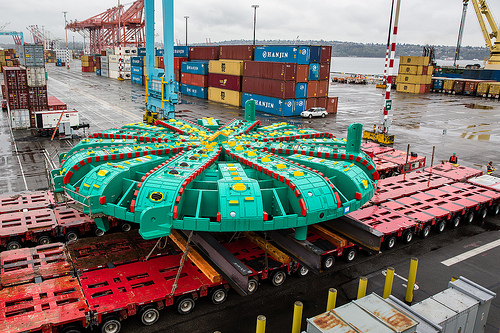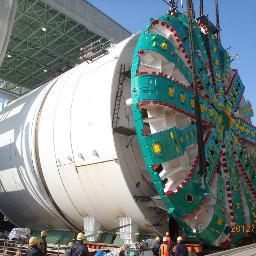www.FirstThursdaySeattle.com Milepost 31 Speaker Series – Preparing for the SR 99 tunneling machine’s summer launch
Milepost 31 Speaker Series – Preparing for the SR 99 tunneling machine’s summer launch
After a 5,000 mile journey from Japan and 10 days of unloading, Bertha, the world’s largest-diameter tunneling machine, is officially on Seattle soil. Join us at this month’s speaker series for a project update including a behind-the-scenes look at the machine’s arrival. We’ll also talk about what’s next for Bertha as crews assemble her 41 pieces in the launch pit and prepare for the start of tunneling this summer.
6 to 6:30 p.m.
Thursday, May 2
211 First Ave. S., Seattle
Admission is free.
After the talk, be sure to leave enough time to explore the rest of the First Thursday Art Walk in Pioneer Square. Free parking is available for First Thursday art walk patrons in Pioneer Square. Please visit www.FirstThursdaySeattle.com for more information about participating garages.
What’s next for Bertha, the SR 99 tunneling machine
Now that spring is here, get outside and take a self-guided walking tour along the paved path west of the work site and watch as crews prepare to reassemble Bertha. Many of Bertha’s pieces including the cutterhead and trailing gear are visible in the work zone. Spot them now before the massive red crane begins lowering Bertha’s pieces into the launch pit. Reassembling and testing the machine will take two to three months. Bertha is scheduled to start digging this summer.
Building one road above another: the South Atlantic Street overpass
Crews continue to build the new South Atlantic Street overpass over SR 99 to the west of Seattle’s stadiums. The wooden forms you see are called falsework, which is a temporary structure that creates a mold where crews will pour concrete to build the permanent structure. Scheduled to open in late 2013, this overpass will allow traffic to bypass frequent train blockages on South Atlantic Street.
For more information about the Alaskan Way Viaduct Replacement Program, visit www.alaskanwayviaduct.org. You can also track Bertha’s progress on Twitter by following @BerthaDigsSR99.





